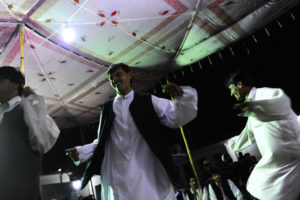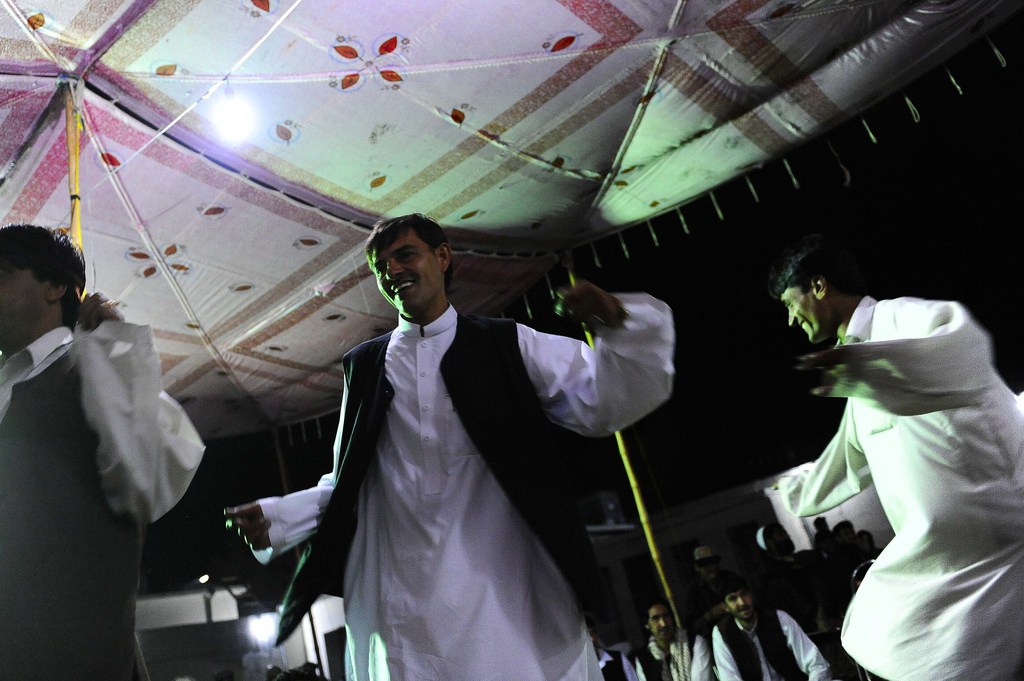Attan, the national dance of Afghanistan, is a fascinating art form rich in history and ritual, but it is not a performance that many people outside Afghanistan ever get the chance to experience. Read on to learn more about this beautiful and captivating cultural tradition.
What are the origins of Attan?

Image by Regional Command East | Flickr
Attan originated as a traditional folk dance of Afghanistan’s Pashtun tribes, which make up the largest ethnic group in Afghanistan. Some experts identify the dance as an ancient pagan ceremony dating back to as long ago as 2000 BCE. At this time, the dance had no particular organized form; rather, it was simply made up of random steps and movements performed to the fast beating of drums. As the centuries went on, the dance form evolved into a Muslim ritual performed mainly by soldiers as a way of getting closer to God before leaving for battle or departing on other missions. Today, Attan is an organized and cohesive dance form that is an integral part of Afghan culture. People perform the dance at all kinds of festive occasions and social gatherings, such as weddings, family parties, and new year’s celebrations.
What does the dance look like?
The basic form of Attan is a group dance performed in a circle; the dancers follow each other round and round in the circle, starting with slow steps that gradually speed up as the dance goes on. Other movements include spins and turns and hand clapping. The dance is intensely physical and can be exhausting, continuing for hours and generally ending only when no dancer is left on the floor. Many Afghans report that it is not uncommon for dancers to faint during a long Attan performance. There is no limit to the number of people that can be part of the circle: sometimes an Attan performance will have just a handful of dancers, and sometimes there will be hundreds of participants in the same circle.
What do the dancers wear?
It is common for Attan dancers to wear traditional regalia when participating in the dance. For men, this often means the thick wool hat known as the pakol and the wool vest called the waskata. During more formal occasions like a marriage, suits and ties are often worn. Women do not usually perform Attan publicly, but on private occasions, they typically participate in the dance wearing brightly colored dresses, often adorned with tiny mirrors that symbolize light.
What music accompanies the dance?
Because Attan is a highly rhythmic dance form, percussion instruments play a very important role in controlling the movements of the dancers. The drum most often used in Attan performances is called a dhol: a double-headed barrel drum with a low, deep, and very resonant sound. Other instruments which can be used to accompany Attan are the tabla, a single-headed hand drum traditionally made of clay with a top of goat or calf skin; a kind of flute known as the zurna or surnai flute; and the 18-string, lute-style instrument called the rabab.
What are the different types and styles of Attan?
Attan has evolved over the centuries into many different styles and types, each one usually associated with a particular Pashtun tribe, region, or ceremonial event. A sampling of these Attan styles includes:
Kabuli Attan—Male and female dancers perform the Kabuli Attan to the beat of a drummer. The form of the dance is a repeated sequence of two to five steps followed by a clap while facing the center; the hips and arms tilt to the left and right, and the wrists perform circular twisting motions.
Wardaki or Wardag Attan—This form of Attan does not include clapping, but involves plenty of twists, turns, and wild spins. The male performers of Wardaki Attan often sport outrageous mustaches and grease their hair to highlight it as they spin around. Wardaki Attan is often started by the leading men singing a song while slowly moving in the circle; as the pace of the dance picks up, the singing stops.
Kochyano Attan—This form of Attan is associated with the nomadic Kuchi people, and its depth and complexity has been attributed to their far-ranging lifestyle, which brings them into contact with many different cultural influences. Women often perform Kochyano Attan for occasions like childbirth or new year’s celebrations; men often perform it with their long hair hanging loose. This form of Attan involves lots of spinning and squatting movements, and handkerchiefs are frequently used as props to accompany arm movements.
Khattak Attan—This martial style of Attan can be traced back to the period of the Moghul Empire, when soldiers performed it while carrying their weapons. Khattak dancers today display extraordinary physical fitness, performing the five-step spinning routine of the dance while holding as many as three swords at once, either crossed behind the back or held out to the side.

